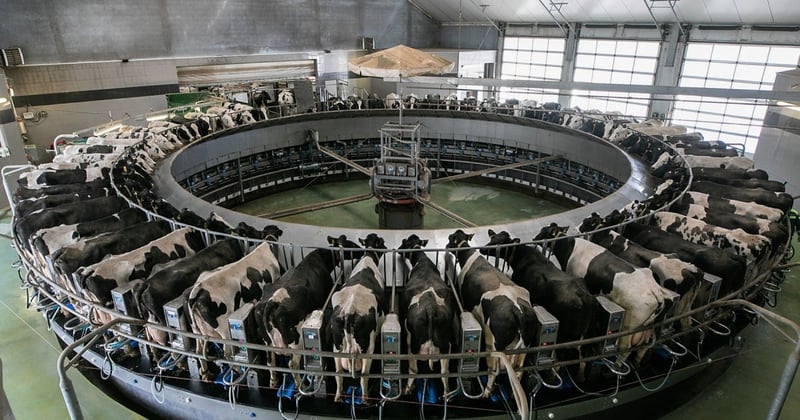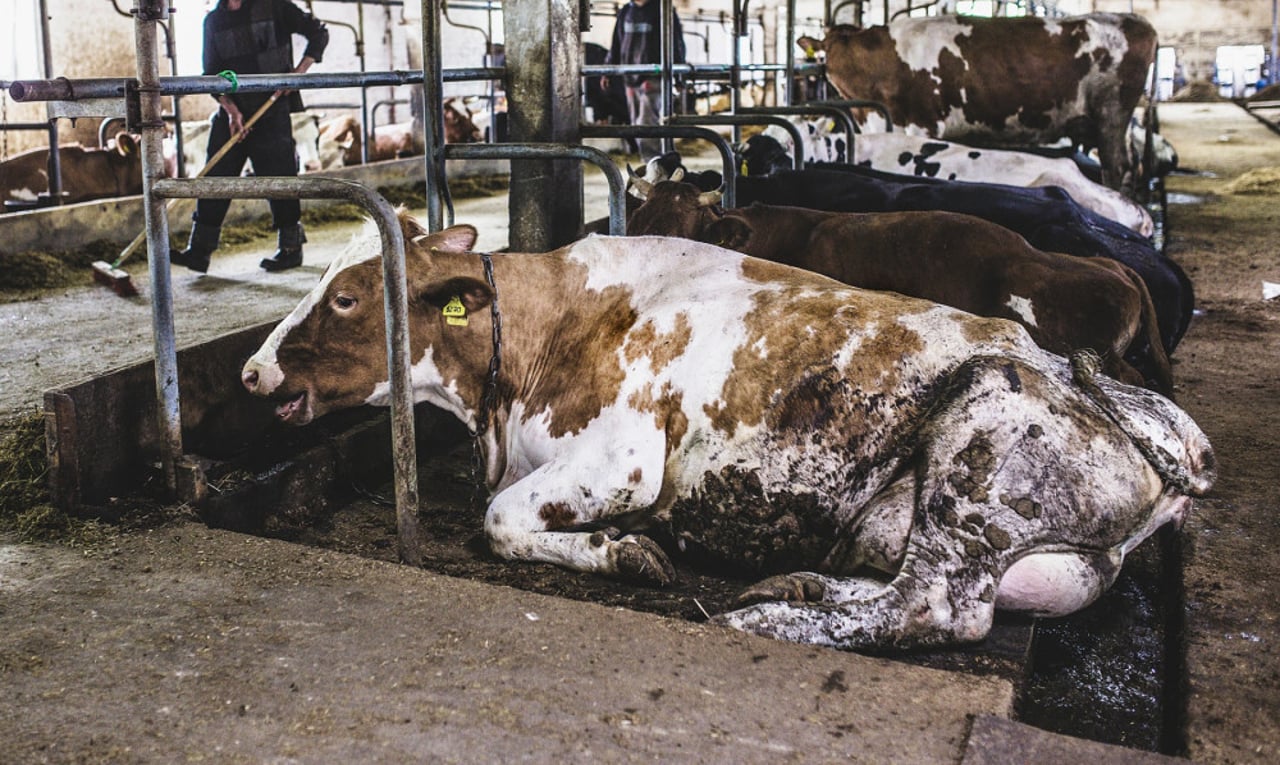
Dairy alternatives and the importance of reducing milk consumption for animal welfare
Blog
A recent explosion at a dairy farm in Texas killed approximately 18,000 cows. This catastrophe underscores the urgent need for system reform and the end of factory farms. With so many alternatives to dairy, we need to reconsider our consumption habits and the impacts of our daily choices on animal welfare and the environment.
On April 10, 2023, a devastating explosion occurred at a dairy farm in Texas, leaving an estimated 18,000 cows dead. Unfortunately, this catastrophe is not an isolated incident. Barn fires are not uncommon, and they pose a significant threat to the welfare of animals in animal agriculture. According to recent data, over 2.99 million farm animals perished in barn fires from 2018-2021 in the United States alone. In Canada, at least 740,000 farm animals died due to barn fires from 2015-2019.
These tragedies highlight the urgent need for systemic reform and the end of industrialized factory farming. At large-scale factory farms, one fire can kill more animals in a day than all the fires combined at small family farms over a whole year. To make a significant difference in animal welfare and decrease the number of animals that are killed in such a horrific manner, we must address the systems that impacts these animals the most – factory farms.
Reducing our reliance on industrial animal agriculture is a simple yet powerful action that can have a significant impact on animal welfare and the environment. By choosing plant-based alternatives, we can reduce the need for intensive agriculture and promote a more sustainable and compassionate future. With “World Milk Day” on June 1st, it's a great time to take a stand by choosing plant-based products.
The cruel conditions of factory farming
Dairy cows raised in intensive are often subjected to inhumane conditions, including confinement, lack of access to pasture, and early separation from their calves. These conditions can lead to stress, injury, and illness, resulting in a lower quality of life for these animals.
Photo: Andrew Skowron / We Animals Media
This is not only harmful to the cows but also to the environment. Dairy production is a significant contributor to greenhouse gas emissions, deforestation, and water pollution, further exacerbating the environmental crisis we face.
The environmental cost of dairy production
The dairy industry is responsible for emitting large amounts of methane, a potent greenhouse gas that contributes to climate change. Dairy production also requires vast amounts of water, feed, and land resources, which can have detrimental effects on the environment, including deforestation and water scarcity.
Animal agriculture is a major contributor to greenhouse gas emissions (GHGs), accounts for a staggering 14.5% of greenhouse gas emissions. It is the primary source of methane and nitrous oxides, the most potent of the three main greenhouse gases. Without drastic reductions in the consumption of animal-sourced foods, agriculture will consume most of the world’s carbon budget necessary for keeping global temperature rises under 2°C by 2050.
Alternatives to dairy
Luckily, there are numerous dairy alternatives that are both delicious and cruelty-free. Plant-based options such as soy, almond, oat, rice, and coconut milk have a lower environmental impact, require fewer resources to produce, and are often fortified with vitamins and minerals that are essential for a healthy diet.
Compared to dairy milk, plant-based alternatives generally have lower greenhouse gas emissions. The production of dairy milk involves feed production for cows, enteric fermentation (methane emissions from cow digestion), manure management, and processing and transportation of milk products, all of which contribute to the overall greenhouse gas emissions associated with dairy production.
Chart: the environmental footprints of dairy and plant-based milks. (Source: Our World in Data)
On the other hand, plant-based alternatives have a lower carbon footprint. They require fewer resources, such as land and water, and often involves less energy-intensive processing and transportation compared to dairy milk production (see the chart above to visualize the significant differences in environmental footprint between dairy milk and plant-based milks).
By choosing a plant-based alternative, we can help reduce the demand for animal agriculture and improve the welfare of cows and other farm animals.
Embracing plant-based alternatives on “World Milk Day” and beyond
The Food and Agriculture Organization of the United Nations declared June 1st “World Milk Day” to recognize the importance of milk as a global food. On this day, let’s also reflect on the impact of our milk consumption choices on animal welfare and the environment. By choosing plant-based alternatives we can make a positive difference, not only on this day but every day.
Plant-based alternatives offer delicious and cruelty-free options while also having a lower environmental impact. Join us in prioritizing animal welfare, sustainability, and your own health by embracing plant-based alternatives. And not just on “World Milk Day”, but every day. Together, we can create a more compassionate and sustainable future.
Top banner: Dairy cows inside stalls on a rotating carousel automated milking system. (Andrew Skowron / We Animals Media)
